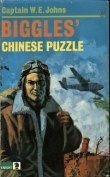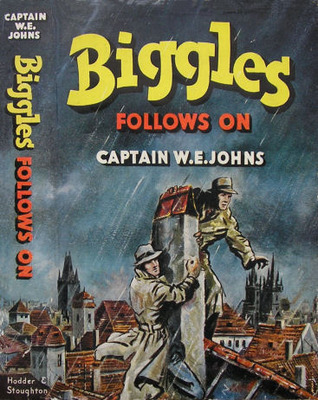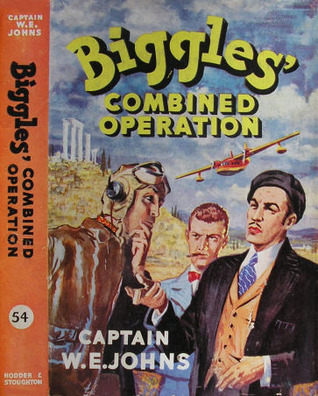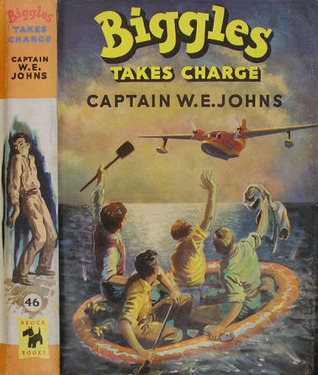
Part of Series
Kroonjuwelen schijnen altijd de speciale belangstelling te hebben genoten van hen die men in poiitiekringen zware jongens noemt. En omdat Biggles op zijn beurt weer speciale belangstelling koestert voor deze zware jongens, kan men het nauwelijks op rekening van het toeval schrijven dat hij althans eenmaal te maken kreeg met een zaak waarin kroonjuwelen een belangrijke rol speelden. Eigenlijk was het Algy die de zaak aan het rollen bracht. Toen hij namelijk gevolg gaf aan de uitnodiging van een zekere Boris Zarill om eens met hem op jacht te gaan, vond hij onder nogal alarmerende omstandigheden, niet zijn gastheer, maar dien zoon. Van hem hoort Algy dat Boris in werkelijkheid aartshertog van Moldavië is en sinds enige tijd spoorloos verdwenen. Vermoedelijk zit er politiek in het spel en Algy ziet deze vermoedens bevestigd als plotseling een zeer goede bekende op het toneel verschijnt. In een poging om te redden wat er nog te redden valt, komt het tot een openlijke strijd, waarin Biggles precies op tijd komt om zijn aandeel te leveren. Wie de oude bekende is die dit avontuur weer eens met zijn aanwezigheid opluistert, zal voor ervaren Biggles-lezers geen moeilijk raadsel zijn: natuurlijk Biggles' aartsvijand...
Author
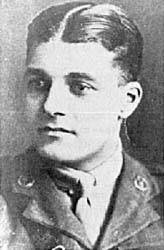
Invariably known as Captain W.E. Johns, William Earl Johns was born in Bengeo, Hertfordshire, England. He was the son of Richard Eastman Johns, a tailor, and Elizabeth Johns (née Earl), the daughter of a master butcher. He had a younger brother, Russell Ernest Johns, who was born on 24 October 1895. He went to Hertford Grammar School where he was no great scholar but he did develop into a crack shot with a rifle. This fired his early ambition to be a soldier. He also attended evening classes at the local art school. In the summer of 1907 he was apprenticed to a county municipal surveyor where he remained for four years and then in 1912 he became a sanitary inspector in Swaffham, Norfolk. Soon after taking up this appointment, his father died of tuberculosis at the age of 47. On 6 October 1914 he married Maude Penelope Hunt (1882–1961), the daughter of the Reverend John Hunt, the vicar at Little Dunham in Norfolk. The couple had one son, William Earl Carmichael Johns, who was born in March 1916. With war looming he joined the Territorial Army as a Private in the King's Own Royal Regiment (Norfolk Yeomanry), a cavalry regiment. In August 1914 his regiment was mobilised and was in training and on home defence duties until September 1915 when they received embarkation orders for duty overseas. He fought at Gallipoli and in the Suez Canal area and, after moving to the Machine gun Corps, he took part in the spring offensive in Salonika in April 1917. He contracted malaria and whilst in hospital he put in for a transfer to the Royal Flying Corps and on 26 September 1917, he was given a temporary commission as a Second Lieutenant and posted back to England to learn to fly, which he did at No. 1 School of Aeronautics at Reading, where he was taught by a Captain Ashton. He was posted to No. 25 Flying Training School at Thetford where he had a charmed existence, once writing off three planes in three days. He moved to Yorkshire and was then posted to France and while on a bombing raid to Mannheim his plane was shot down and he was wounded. Captured by the Germans, he later escaped before being reincarcerated where he remained until the war ended.
